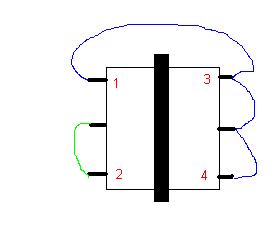I have one of those bug zapper tennis raquet's which no longer works.
You used to plug it into 240volts and it would charge up ready for use, then you flick a switch, and press a button when swatting at fly's.
As i mentioned, it no longer works. Im wondering, the grey rectangular object in the picture, could that possibly be a storage capacitor? When you have it plugged into 240v to charge, it seems to be getting 240v at the (+) and (-) terminals on it.
The large brown cap at the end of the circuit board is rated at 2000v, so i assume thats what this little beast is meant to output, but i havent got anything that can read that high, so i cant just plug a variable power supply onto the terminals.
**broken link removed**
You used to plug it into 240volts and it would charge up ready for use, then you flick a switch, and press a button when swatting at fly's.
As i mentioned, it no longer works. Im wondering, the grey rectangular object in the picture, could that possibly be a storage capacitor? When you have it plugged into 240v to charge, it seems to be getting 240v at the (+) and (-) terminals on it.
The large brown cap at the end of the circuit board is rated at 2000v, so i assume thats what this little beast is meant to output, but i havent got anything that can read that high, so i cant just plug a variable power supply onto the terminals.
**broken link removed**
Last edited:




